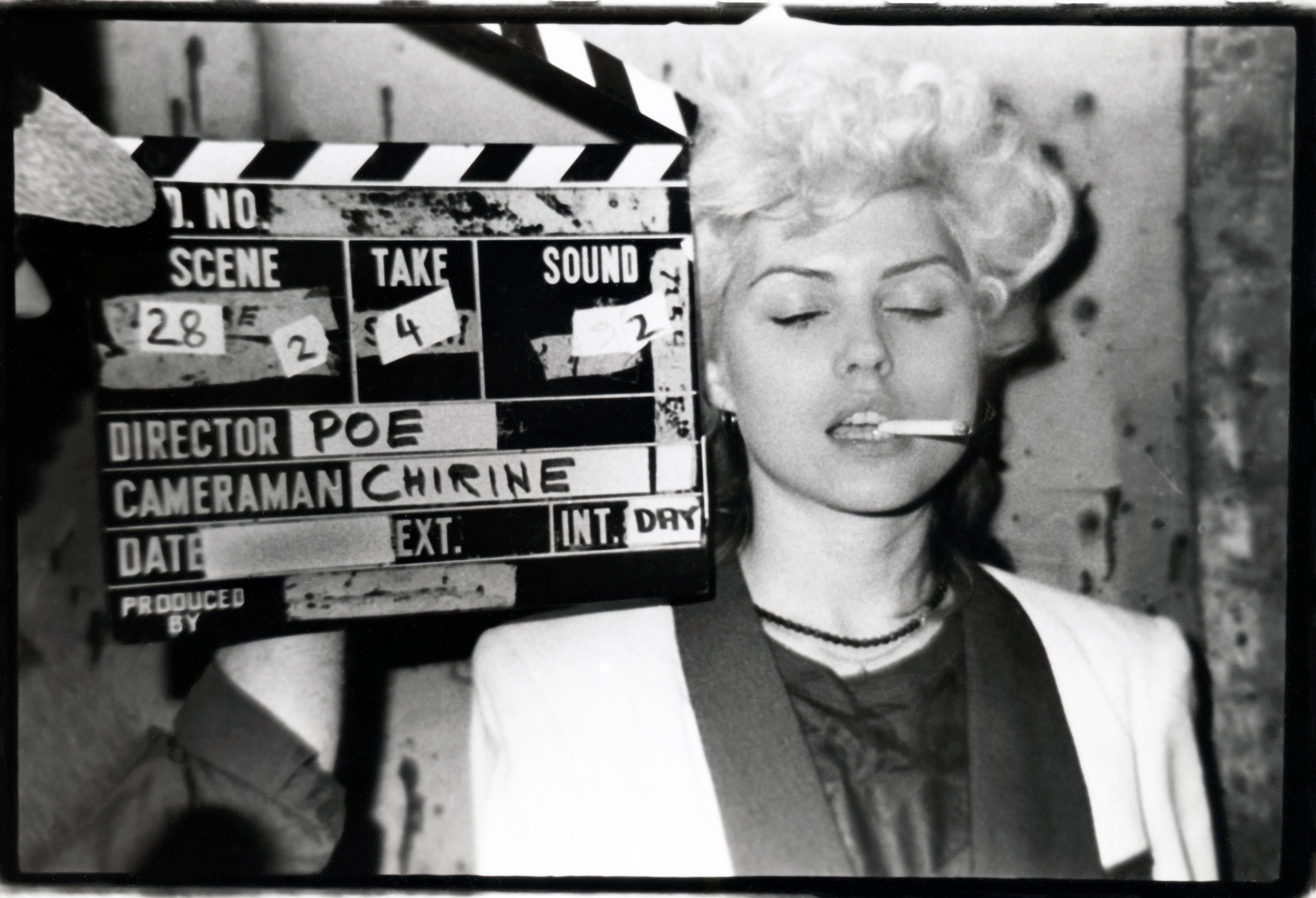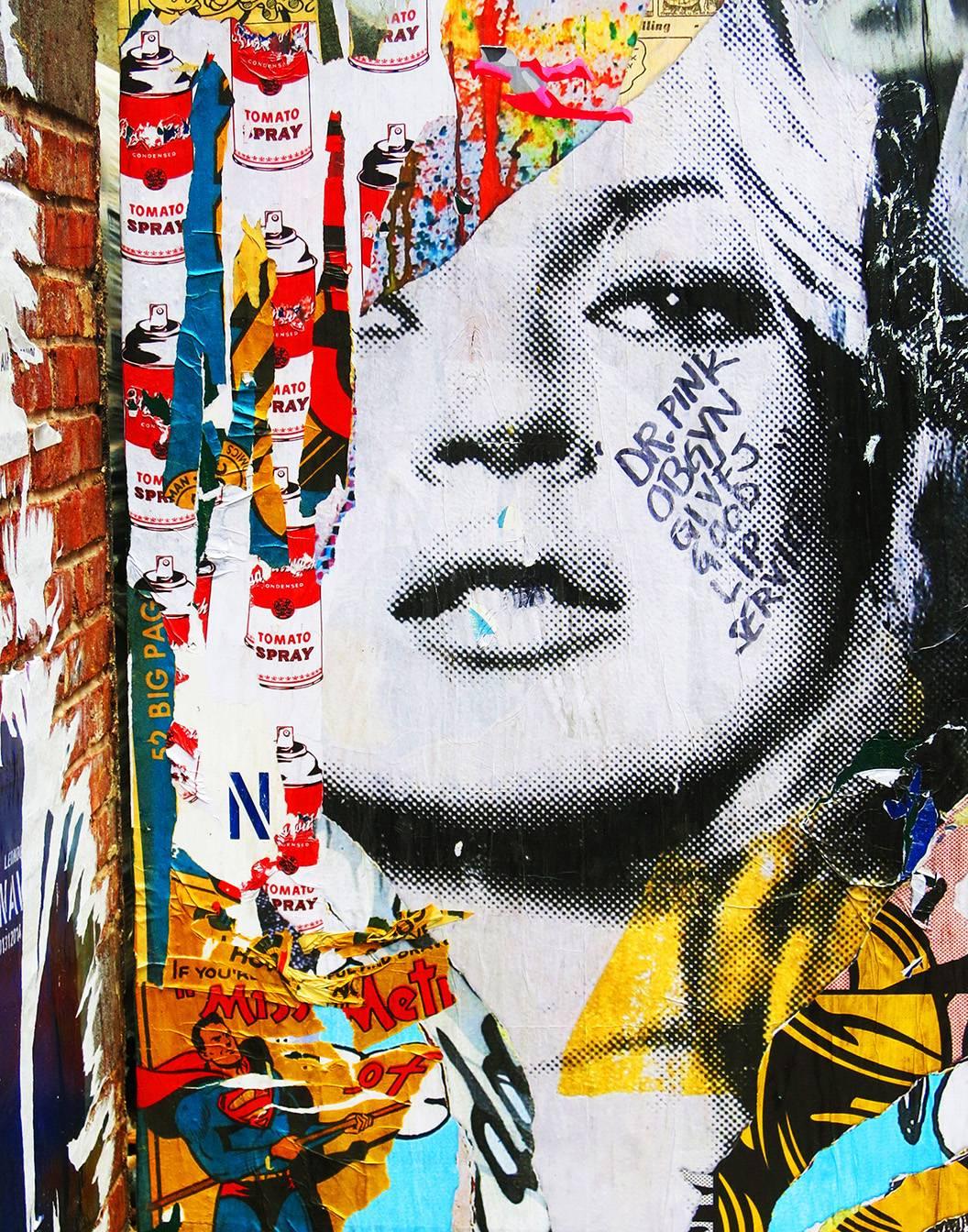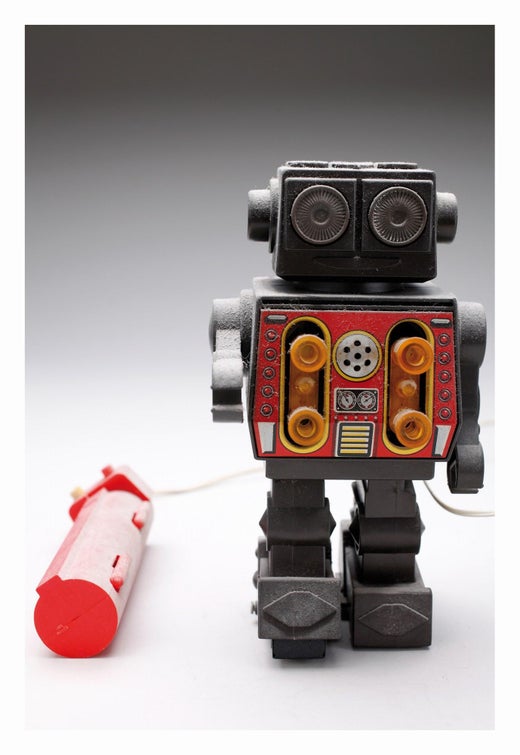Christian RothmannUntitled (from ROBOTNICS Series)2019
2019
About the Item
- Creator:Christian Rothmann (1954)
- Creation Year:2019
- Dimensions:Height: 12 in (30.48 cm)Width: 8.3 in (21.09 cm)
- Medium:
- Movement & Style:
- Period:
- Condition:
- Gallery Location:Kansas City, MO
- Reference Number:
Christian Rothmann
Christian Rothmann is a painter, photographer and graphic artist. In 1976, he first studied at the Hochschule für Gestaltung Offenbach am Main, Germany and moved to Berlin in 1977, where he graduated in 1983 at the Hochschule der Künste. From 1983–95, he taught at the university as a lecturer and as an artist with a focus on screenprinting and American art history. To date, a versatile body of work has been created, which includes not only paintings but also long-standing photo projects, videos and public art. Guest lectures, teaching assignments, scholarships and exhibitions regularly lead Rothmann to travel home and abroad.
- ShippingRetrieving quote...Ships From: Kansas City, MO
- Return PolicyA return for this item may be initiated within 10 days of delivery.
- StiflingBy Rachel LaurenLocated in Kansas City, MOArtist: Rachel Lauren Title: Stifling Date: 2019 Medium: Inkjet print Dimensions: 14 x 11 in. Photographer Rachel Lauren invites viewers to become more aware of the way natural beauty has been contorted, packed and sold as a cold, manufactured, cloned and empty product. Are women inherently beautiful, or do they require modifications? Are you seeing your uniquely created reflection through a distorted lens? By imposing a juxtaposition between real and fake through abstract portraiture, Lauren calls attention to these complex ideals in "Distorted Beauty". Lauren is currently an MFA candidate at UMKC and based in Colorado. Since the age of two, she has fostered a love for photography and traveling which have both shaped her understanding of the issues she addresses in her work. Contemporary photography, portrait photography, experimental portraiture, conceptual photography, Steve McCurry, Lisa Kristine...Category
2010s Pop Art Photography
MaterialsColor, Photographic Paper, Digital, Inkjet
- Diptychon # 35By Thomas FlorschuetzLocated in Kansas City, MODiptychon # 35 Color photograph Signed, numbered, dated and titled by hand Edition: 12 + III COA provided Thomas Florschuetz (German, born 1960) recently emigrated from East Germany...Category
1990s Abstract Portrait Photography
MaterialsC Print, Archival Ink, Archival Paper
- Diptychon # 34By Thomas FlorschuetzLocated in Kansas City, MODiptychon # 34 Color photograph Signed, numbered, dated and titled by hand Edition: 12 + III COA provided Thomas Florschuetz (German, born 1960) recently emigrated from East Germany...Category
1990s Contemporary Portrait Photography
MaterialsC Print, Archival Ink, Archival Paper
- Diptychon # 30By Thomas FlorschuetzLocated in Kansas City, MODiptychon # 30 Color photograph Signed, numbered, dated and titled by hand Edition: 12 + III COA provided Thomas Florschuetz (German, born 1960) recently emigrated from East Germany...Category
1990s Contemporary Portrait Photography
MaterialsC Print, Archival Ink, Archival Paper
- Untitled (from ROBOTNICS Series)By Christian RothmannLocated in Kansas City, MOChristian Rothmann ROBOTNICS Series C-Print 2019 Edition S (Edition of 10) 12 x 8.3 inches (30.5 x 21 cm) Signed, dated and numbered verso Other Edition Sizes available: - Edition ...Category
2010s Outsider Art Photography
MaterialsC Print
- Untitled (from ROBOTNICS Series)By Christian RothmannLocated in Kansas City, MOChristian Rothmann ROBOTNICS Series C-Print 2019 Edition S (Edition of 10) 12 x 8.3 inches (30.5 x 21 cm) Signed, dated and numbered verso Other Edition Sizes available: - Edition ...Category
2010s Modern Photography
MaterialsC Print
- Debbie Harry on the set of The Foreigner East Village, 1977 (Blondie)By Fernando NataliciLocated in NEW YORK, NYCooler than cool... Debbie Harry, New York, 1977, photographed on the set of "The Foreigner" by celebrated New York underground photographer Fernando Natalici. The Foreigner (direct...Category
1970s Pop Art Black and White Photography
MaterialsC Print
- Debbie Harry on the set of The Foreigner East Village, 1977 (Blondie)By Fernando NataliciLocated in NEW YORK, NYCooler than cool... Debbie Harry, New York, 1977, photographed on the set of "The Foreigner" by celebrated New York underground photographer Fernando Natalici. The Foreigner (director Amos Poe 1977) - a seminal cinematic work at the height of the 1970's American underground - a film which has been documented in virtually every publication pertaining to the history of the late 70's New York Downtown Art scene. Digital C-Print on Kodak Lustre. 11 x 14 inches. Hand Signed, titled & numbered from an edition of 25 (+ 10 A/P's) Obtained directly from artist. Lot 180 New York is authorized dealer rep of Fernando Natalici. Excellent condition. About The Artist: New York based photographer Fernando Natalici is best known for his iconographic documentation of the downtown Manhattan art...Category
1970s Pop Art Black and White Photography
MaterialsC Print
- Kate Moss Street Art Photograph New YorkBy Fernando NataliciLocated in NEW YORK, NYKate Moss Street Art Photo: A rare Mr. Brainwash Kate Moss mural photographed in New York's famed Soho area in 2014 by celebrated downtown photographer Fernando Natalici. Digital C...Category
21st Century and Contemporary Pop Art Color Photography
MaterialsC Print
- Debbie Harry on the set of The Foreigner (East Village 1970s Blondie photograph)By Fernando NataliciLocated in NEW YORK, NYDebbie Harry photograph by Fernando Natalici: Cooler than cool... Debbie Harry, New York, 1977, photographed on the set of "The Foreigner" by celebrated New York underground photographer Fernando Natalici. The Foreigner (director Amos Poe 1977) - a seminal cinematic work at the height of the 1970's American underground - a film which has been documented in virtually every publication pertaining to the history of the late 70's New York Downtown Art scene. Digital C-Print on Kodak Lustre. 16 x 20 inches. Signed, titled & numbered from an edition of 20. Obtained directly from the artist. Excellent condition. About The Artist: New York based photographer Fernando Natalici is best known for his iconographic documentation of the downtown Manhattan art scene of the mid/late 70's and early 80's. Natalici’s portfolio includes sought after images of a young Patti Smith, Blondie, Talking Heads, Keith Haring, Jean-Michel Basquiat, The Ramones and more. As an Art Director, Fernando has played a key role in creating memorable visuals for historic NY venues such as CBGB's, The Mudd Club, Area and Danceteria. Fernando’s photo archive and art design were most recently featured in two highly regarded New York shows: “Area” at The Hole Gallery NYC (2014) & “Downtown New York Film” at The Museum of The Moving Image (2015). "The Foreigner" is a testament to the "punk" sensibility as manifested at CBGB during this time; the streets and lofts of SoHo and the Lower East Side art scene. Related Categories Deborah Harry...Category
1970s Pop Art Black and White Photography
MaterialsC Print
- Galatea 10 - Contemporary photography, Pop Art, Nude, Cocktails, Lilies, FruitBy Tortora & TravezanLocated in Brighton, GBGalatea 10 is a vibrant C-Type Print on Fujiflex Paper in an Edition of 9 + 2 Artist Proof with Dimensions of 100cm x 150cm. Please bear in mind that all prints are produced to orde...Category
21st Century and Contemporary Pop Art Nude Photography
MaterialsC Print, Digital
- Kate Moss Photo (Kate Moss Supreme New York)By Fernando NataliciLocated in NEW YORK, NYKate Moss Supreme New York: In 2012, Moss was chosen as the face for Supreme’s spring campaign. Kate’s cold stare down British photographer Alasdair ...Category
21st Century and Contemporary Pop Art Color Photography
MaterialsC Print






